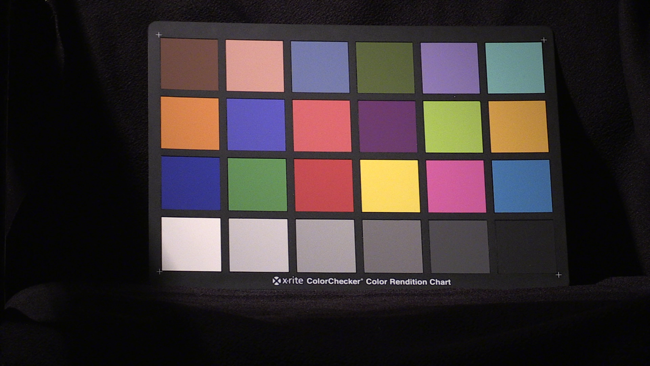
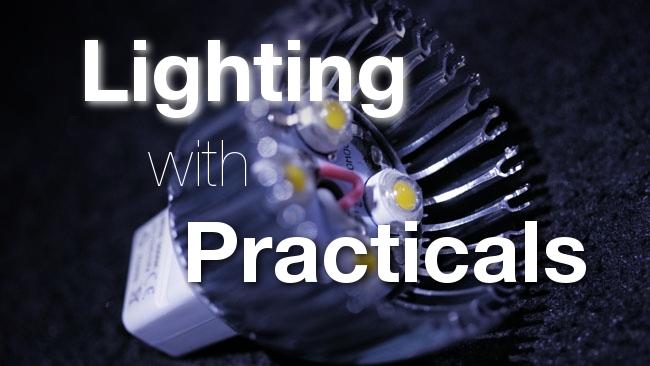 Lighting with Practicals
Lighting with Practicals
RedShark News Technical Editor, Phil Rhodes, breaks out the Macbeth chart and shines a light (multiple lights, in fact) on the colorimetry of common light sources in use by low-budget productions.
Moviemaking is easily divided into two groups. First, there are those for which everything they do with the camera is done precisely as recommended by the texbooks, with the best brand-name equipment applied by the best crews with all the time in the world to get things exactly right. And second, well, there are the others. A large part of practical filmmaking involves dealing with the less-than-ideal, particularly in terms of lighting.
Tungsten light, for its failings, tends not to be a problem, but it's becoming rarer even in domestic circumstances. Many LED-based lighting devices, though, are only somewhat white, on the basis they don't actually emit much turquoise. The world contains a lot of riffs on the idea of pumping electrons into a gas until it glows, a pursuit seemingly designed to frustrate camera designers. We must, we're told, avoid these problems, or the lead actress will turn green. It's quite common for big productions to replace dozens of fluorescent tubes in order to achieve colorimetric nirvana.
Even so, people shoot in available light all the time. Mercury vapour light (not to be confused with the mercury iodine technology of an HMI) is an old and extreme example, since it makes humans look recently exhumed even to the naked eye, due to the extreme deficiency in warm colours of unadulterated mercury discharge. More common problems include the cheap fluorescent tubes used in a lot of retail scenarios, and, of course, the world's rapidly expanding installed base of LEDs, which range from pretty credible to absolutely terrible.
The images that accompany this article were shot on a Canon XF205, white balanced appropriately and adjusted with only linear RGB controls to normalise the images. While this might seem like cheating, the purpose here is to look at the colorimetry, not colour temperature; the idea is to find out which colours these light sources might render so poorly as to create real problems. Using advanced selective grading could have normalised all the charts, but that would have defeated the purpose. Because of the different radiation pattern of different light sources, and the enormous output difference between a 150W metal halide light and a 6-watt LED cluster, there are still visible differences, but the colours are reasonably comparable.
The control
The first light source is a 36W fluorescent tube that Philips call "Master TL-D 90", at 5300K colour temperature. This is a good-quality fluorescent light which is generally suitable for film and TV work, and is commonly used in scenarios where large numbers of tubes must be replaced and where Kino-Flo tubes would be cost prohibitive. While I can't find TLCI data for the TL-D 90/950 online, they publicise a colour rendering index of 92, allowing us to treat this lamp as a control.
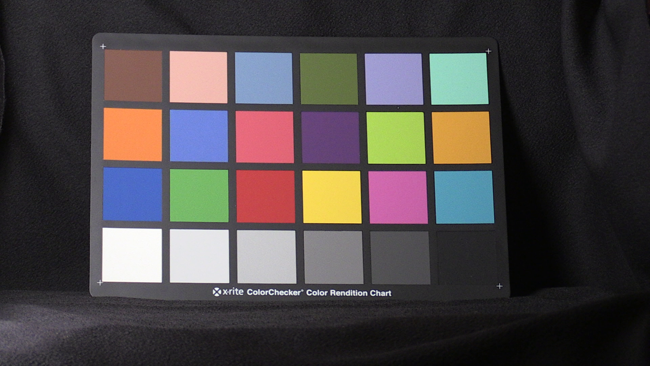
Consumer tungsten
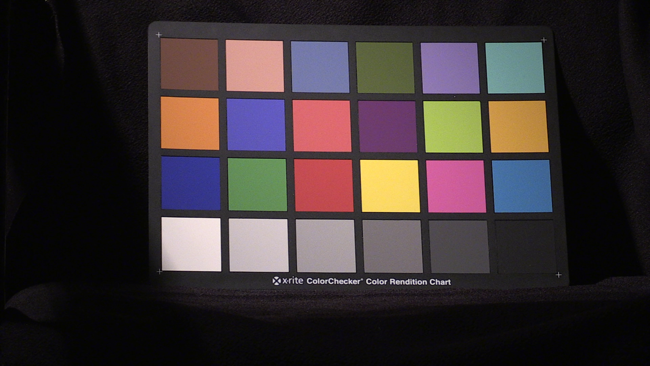
This is a desk lamp with a 60-watt bulb, not a halogen type, which runs its filament at a lower temperature than a movie light. This results in a low colour temperature of probably 2500-2800K, as well as notoriously poor efficiency. Power-hungry as it is, though, the tungsten light source is cheap and causes no colour problems. This light almost certainly has the highest CRI of anything discussed in this article. The low colour temperature means the blue channel is a little noisier than it could be, since the XF205 must boost the level of blue signal to compensate, but there are no colour problems. The edges of the chart are underexposed due to practical limitations of the light source.
Consumer Flos
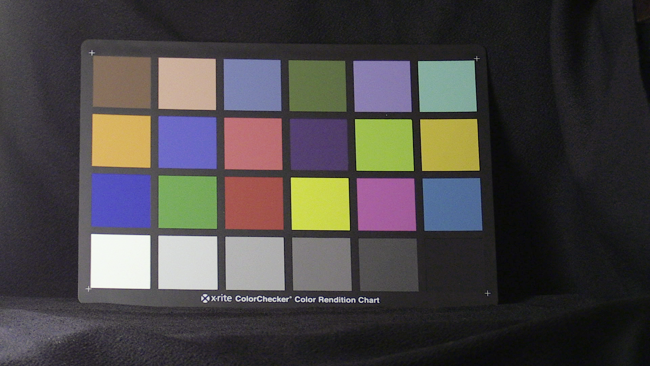
This chart is illuminated with a fluorescent tube marked "Osram L36W/23 White". This is a low-cost tube used in places which need only look good to the human eye. It is far less bright than the higher-grade Philips tube (Osram also make high grade tubes). As to colour, the red chip on the third row is noticeably desaturated, and the blue chip more saturated. The second-row purple chip is very dark and grey, and despite its warm-white appearance, this tube renders reds poorly on camera. The spikiness of the blue output has made the navy-ish blue chip look royal blue and the yellow overbright. Skin tones – the first two chips on the top row represent two varieties – lack red and look sallow. It might not be impossible to shoot under this light, but it's far from ideal.
HMI-like performance on the cheap
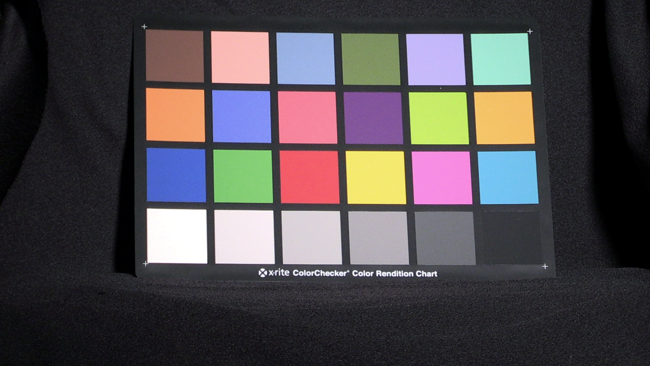
This is a 150W ceramic metal halide lamp, marked "Osram PowerStar HCI/T NDL", of the type used in architectural work. At about 4000K, it's a handy choice for movie lighting, being correctable to either daylight or tungsten without dense filtration. Historically, metal halide was designed for applications where high CRI is unnecessary, and as a result can be hard to shoot, but with this modern ceramic type, the surprise is pleasant. The lamp does a credible job, with perhaps slightly desaturated deep reds (the chip on the chart is a deeper, more crimson shade than given here). This sort of technology enables lighting such as that sold by Cool Lights in their CL-MF0150 fresnel, offering access to HMI-like performance at a considerably lower cost.
Inexpensive LEDs
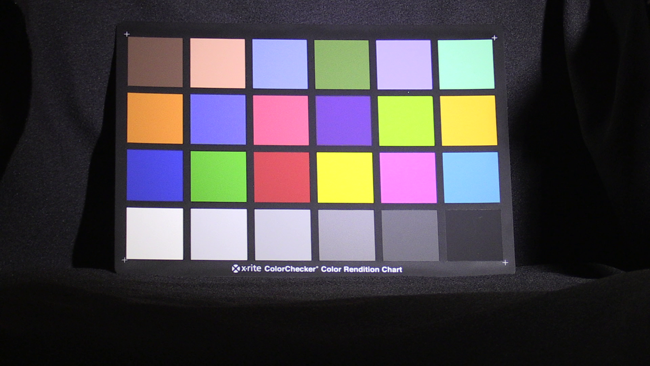
You can probably tell when a LED cluster costs under £3 on eBay and is simply described as "cool white," it's not going to be an ideal filmmaking tool. To be fair, the fact that devices with costs this low are now a realistic contender for interior lighting is fantastic, but there are some problems that exclude this from serious consideration. The darker skin tone chip, the first on the top row, is greyish and undersaturated, although the lighter skin tone seems less severely affected. The light orange chip at the far right of the second row is rendered as yellow. The purple chip (fourth on the second row) and any chip that's a shade of green are pushed towards the day-glo.
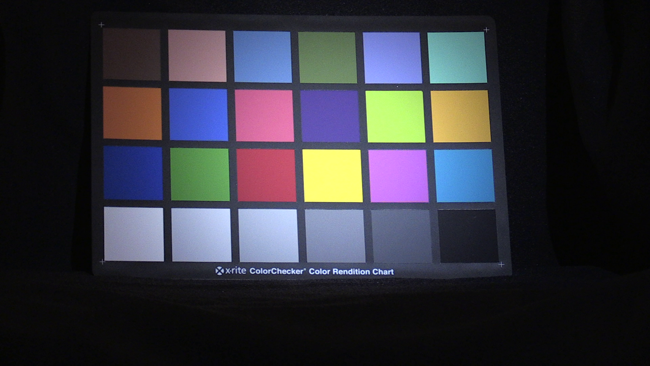
The exposure error is due to the light source being a cheap eBay LED flashlight. This is possibly one of the worst sources of white light ever enabled by really high technology, rendering all the blue or blueish chips considerably brighter than the overall exposure would suggest is normal. The bright, flaring, neon yellow is a problem we saw in other tests with LEDs, and is possibly an artifact of their yellow phosphor emission. Otherwise, the camera actually does a decent job of rendering this cold, bluish light.
Sadly, there's no firm conclusion to make. Lighting will continue to evolve. We will continue to encounter all of these light sources on an everyday basis, and we must deal with them. Happily, even quite bad LEDs are now better than they ever were, and modern ceramic metal halide technology does well. Still, the Macbeth chart, and possibly a handheld spectrometer, might warn us of what's going on, but they can't solve the problem. Neither can filtering, for the most part, at least not without sapping totally unacceptable amounts of light. The upside is that even the worst of these light sources are to some extent shootable – perhaps best to avoid mixing them, though, unless you have a colourist who's both talented and very, very patient.
Tags: Production


Comments